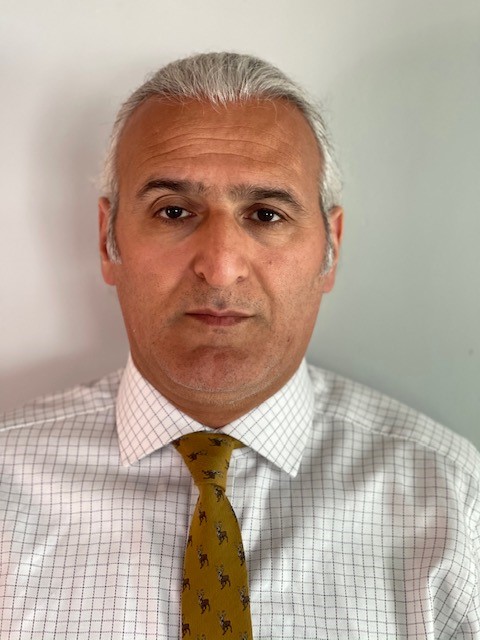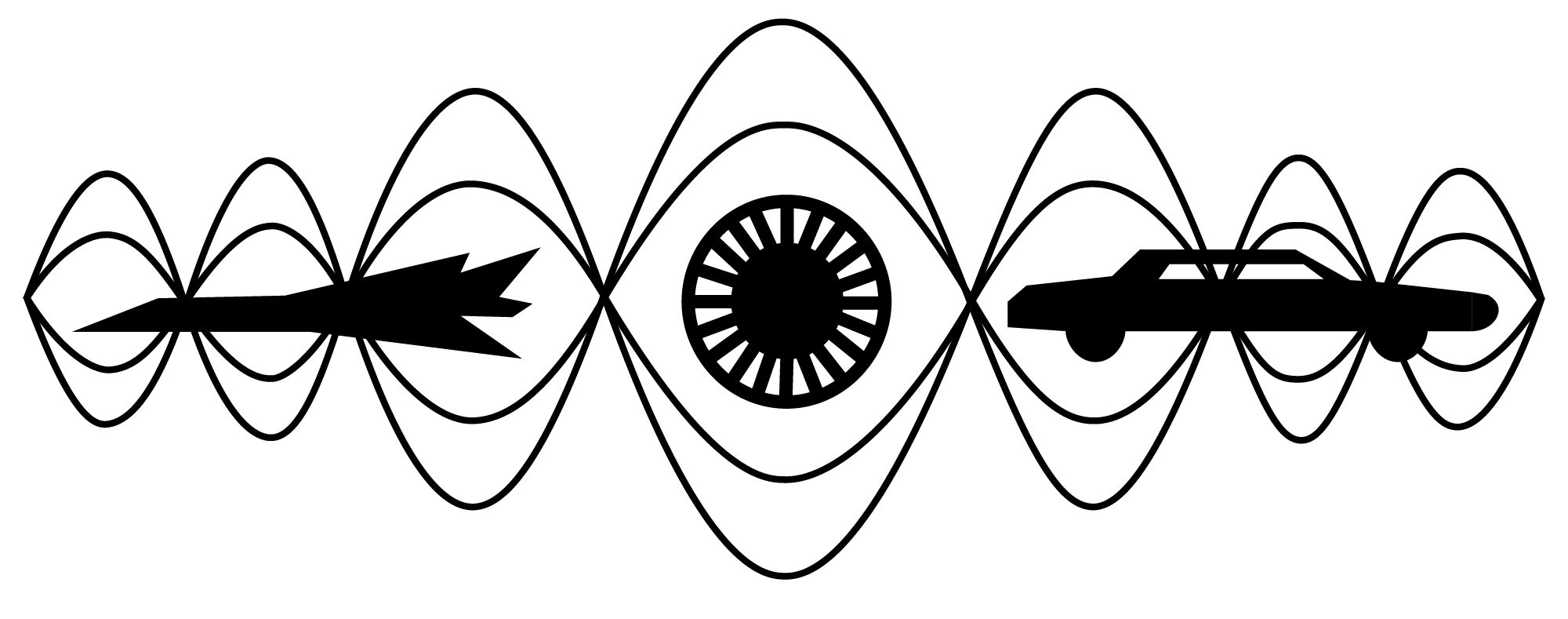Abstracts can be submitted to the Structured and Regular Sessions. The Congress Organisers reserve the right to shift accepted abstracts between sessions.
Structured Sessions are organised by scientists of acknowledged reputation who define the scope of the sessions, personally invite authors, review abstracts of contributed papers, schedule the papers, and finally chair the sessions.
List of the Structured Sessions:
The purpose of this structured session is to report on the latest research and development works carried out in the field of sound and vibration measurements, and analysis. Papers presented in this session can focus on experiments carried out in research laboratories or in practical installations in vehicles or in industrial applications, etc. The papers can, for example, treat sensor technology, transducers that actually consists of a combination of sensor/sensors and signal processing for sound and vibration measurements, measurement and analysis of sound and vibration in new applications areas or in challenging applications. Papers may also concern new norms on sound and vibration quantities and their purpose, and new or useful information and/or quantities extracted from sound and vibration signals.
|
Håkansson Lars
Send an email

Claes Hedberg
Send an email
|
This session covers all aspects related to the measurement techniques and sensors for sound and vibration. Reflecting the current state of the art, the session includes applications of traditional measurement techniques and sensors for performing practical measurements in acoustics and vibration, concepts and proposals of new measurement techniques and sensors with associated hardware and software, and the development of new measurement systems with the incorporation of standards for sound and vibration.
|
Lixue Wu
Send an email

|
Actuators and sensors often constitute key components of an active noise and vibration control system that will determine the overall performance of the active system. Aspects such as actuator and sensor placement, sensitivity, authority, linearity, robustness and cost are of importance in an active control system. This structured session will address recent research on traditional or new transduction technologies in active control.
|
Marek Pawelczyk
Send an email

|
This structured session continues the series of sessions on this topic at previous ICSV conferences. The purpose of this session is to report recent research on algorithms, signal processing and hardware implementation for active noise and vibration control. The latest advancements addressing linear and nonlinear control, algorithmic and signal processing optimization for efficient and robust real-time implementation as well as new processing platforms are welcome. Both fundamental aspects and practical issues related to algorithms for active control will be covered.
|
Marek Pawelczyk
Send an email

|
Acoustic metamaterials are engineered structures designed in such a way to exhibit acoustic properties not readily available in nature. One of the main issues of such artificial structures is the limited bandwidth over which the acoustic properties can be tweaked out. To overcome this, active control techniques have been identified as an enabler, driving a significant part of the scientific community towards the development of active metamaterials. This structured session aims at providing a snapshot of the research on active metamaterials and metasurfaces, through the presentation of theoretical and experimental investigations, highlighting the practical applications of such concepts.
|
Marek Pawelczyk
Send an email

|
The spacecraft design is heading towards the direction of ultra-high speed, large scale and multi-function with the gradual implementation of the major projects in aerospace engineering, its launching and operating environment is likely to worsen.
The spacecraft needs to withstand extremely complex and harsh dynamic environment during the launch process.
This session aims to bring together scientists with an academic and/or industrial background in this area. The suggested topics include but are not limited to the following: modeling and prediction of vibration and acoustics using numerical methods, nonlinear effects, equivalence theory between acoustic and vibration test and application, acoustic fatigue as well as a variety of acoustic and vibration control method including active and passive, boundary condition modeling and measurement, propagation mechanism of shock waves in structure, various advanced test methods, etc. All papers giving insight on vibration and acoustic simulation, test and control in spacecraft are welcome.
|
LING ZHENG
Send an email

|
Passive methods, such as acoustic liners and Helmholtz resonators, are efficient to control the noise and instability. This session invites papers on passive control of aeroacoustic and thermoacoustic instability. The investigations in this structured session can cover the latest development in theoretical, numerical and experimental approaches concerning control methods for aeroacoustics, involving (but not limited to) fan noise, jet noise, aircraft noise, wind tunnel noise, vortex-sound resonance and thermoacoustic instability.
|
Xiaoyu Wang
Send an email
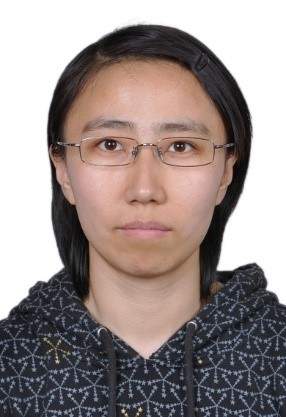
|
Unsteady combustion generates sound. A particularly violent form of combustion noise tends to arise if the combustion takes place in an acoustic resonator, because then the heat release rate and the sound field can interact in such a way that they amplify one another, generating a "thermoacoustic instability". This can lead to structural damage in gas turbine combustors and some types of aircraft, so avoiding thermoacoustic instabilities is paramount. They are a complicated phenomenon, involving sound waves, combustion, aerodynamic effects and structural waves, as well as the interaction between all these. This session aims to bring together scientists with an academic and/or industrial background in this area. With its focus on fundamental aspects of thermoacoustics, it complements the session T03 SS07 "Dynamics and acoustics in sprays, liquid fuel flames and aero engine combustors", which focuses on the engine applications and which is organized by Jim Kok.
Suggested topics of the current session include, but are not limited to the following: Modelling of the thermo-acoustic feedback with analytical and numerical methods; Nonlinear effects; Active control of combustion noise and thermo-acoustics; Modelling of the acoustic source processes with a view to application in analytical and numerical methods; Sound propagation in combustors with non-uniform properties; Boundary condition modelling and measurements; Physical processes involved in the generation of combustion noise.
|
Jim Kok
Send an email

|
The structured session on aircraft interior noise and vibration control invites papers related to all aspects of aircraft interior noise and vibration control, such as structure borne and airborne transmission control through passive or active means, methods for Transfer Path Analysis or noise reduction means design, laboratory testing, flight testing, modeling and validation. All papers giving insight on noise and vibration sources applicable to interior noise (turbulent boundary layer, engine noise and vibration, aircraft systems noise) are welcome
|
Bruno Campolina
Send an email
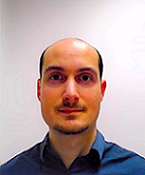
|
Aircraft noise has received growing attention recently due to the ongoing expansion of the aviation sector and the ever-more stringent regulations on noise emissions worldwide. Airframe noise is significant during the approach in which the main noise sources include the airfoils and high-lift devices. Airfoil self-noise is also the main source of aerodynamic noise for many industrial fluid types of machinery, and the aerodynamic noise from the airfoils of wind turbines, unmanned aerial vehicles, and ventilation/cooling fans presents further challenges. The development of noise-reduction technologies requires an in-depth understanding of the noise generation mechanisms.
This Structured Session calls for quality original research works and/or innovative design concepts, and aims to showcase the latest developments in theoretical, numerical, and experimental investigations of the source mechanisms and control methods for airfoil/high-lift device noise. The topics of the Structured Session cover the latest advances in all aspects of the generation and reduction of airfoil/high-lift device noise in order to advance knowledge in understanding the source mechanisms and developing novel control techniques of airframe noise, as well as applying these noise suppression technologies in other scenarios and industries.
|
Yu Liu
Send an email
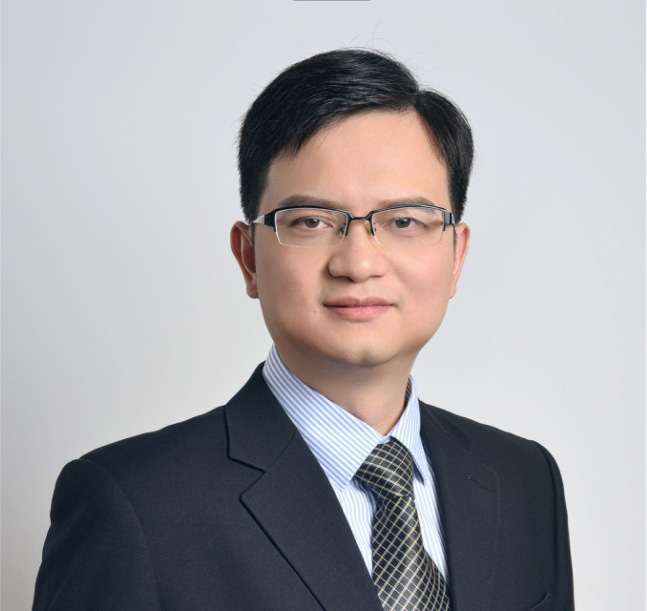
|
The structured session on aircraft engine noise invites papers related to all aspects of aircraft engine noise control, such as fan noise, nacelle liner technology, nacelle morphing technology, combustor noise, mixer technology, shock cell noise or propeller noise. All papers giving insight into engine noise propagation to aircraft structure or landscape for cabin noise or community noise are also welcome.
|
Jim Kok
Send an email

|
Thermoacoustic instabilities pose great threat to combustion systems as they are large amplitude pressure oscillations which can cause structural damage. Often, these instabilities are mitigated through passive acoustic dampers like acoustic liners, Helmholtz resonators or quarter- and half- wave resonators. This structured session invites papers on passive control of thermoacoustic instabilities; and is not limited to just the use of acoustic liners and resonators. It could also be design modifications, utilisation of existing phenomena like heat exchanging etc, to name a few. We invite theoretical, numerical and experimental studies (including validation studies) that effectively dampen instabilities in combustion systems.
|
Aswathy Surendran
Send an email
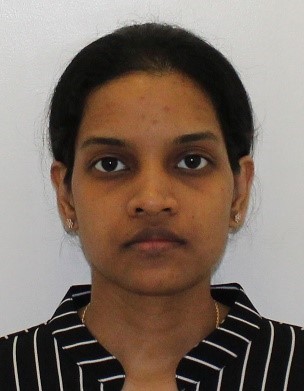
|
Combustion of hydrogen from renewable sources is an emerging technology that can replace fossil fuels and so provide carbon-neutral energy. POLKA is a Marie Skłodowska-Curie Research Network running from February 2019 to July 2023; it includes with 15 young researchers working towards a PhD. Their goal is to solve serious technical problems, which are unique to hydrogen combustion: thermoacoustic instabilities and flashback. Thermoacoustic instabilities are large-amplitude pressure oscillations caused by an escalating interaction between the flame and acoustic waves; they tend to occur unexpectedly and cause major hardware damage. Flashback is the dangerous phenomenon of the flame propagating backwards into components not designed for high temperatures. New physical insight is being created by POLKA with a combination of experiments, numerical simulations and analytical techniques. This structured session will showcase POLKA's research activities in presentations by the young researchers.
|
Maria Heckl
Send an email
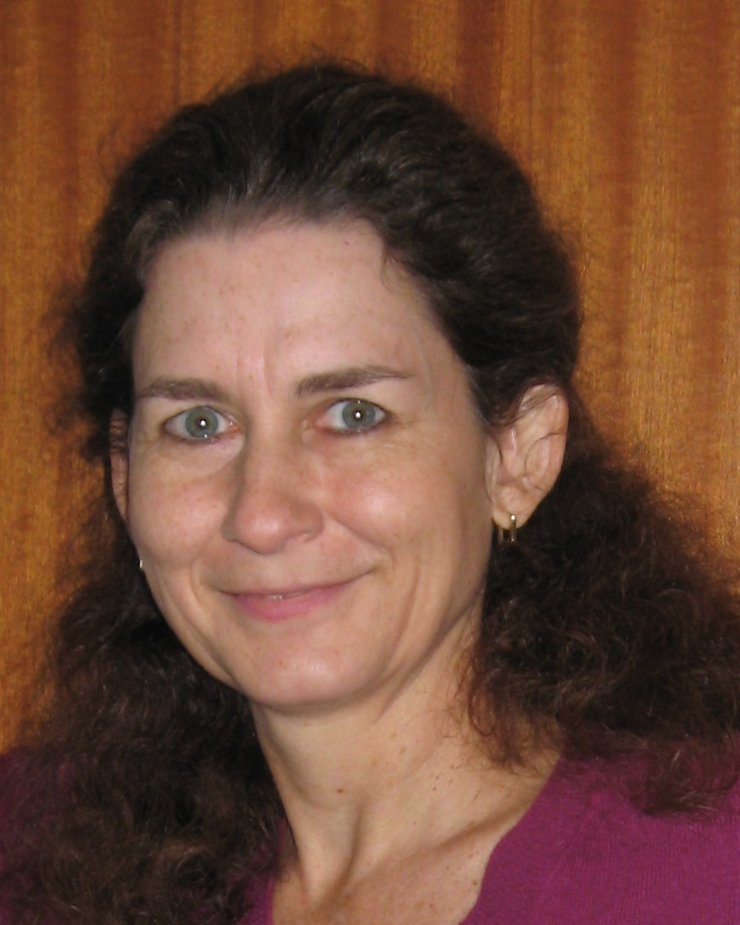
|
The session will bring together latest research on topics exploring the dynamics of thermoacoustic systems (gas turbine and rocket engine combustors) undergoing transition from stable to unstable states, transition/switching between unstable states (periodic and aperiodic states), and how these transitions might be related to events such as flashback and blowout. Special focus will be on experiments, simulations, and modeling efforts to elucidate the role inherent noise can play in such transitions.
|
Lipika Kabiraj
Send an email

Malcolm J. Crocker
Send an email

|
The session is dedicated to the aerodynamic noise of rotating-blade technology, including theoretical, numerical and experimental aspects. The variety of flow regimes in the covered topics, from low-speed to transonic, and from free-field to ducted machines, is the occasion of reviewing basic mechanisms and recent methodological advances.
|
Michel Roger
Send an email

|
This session will be focused on both fundamental development and practical application of data-driven methods in thermoacoustics. Examples of methodologies are machine learning, physics-informed machine learning, data assimilation, Bayesian methods, and more. Examples of applications are modelling and prediction of nonlinear thermoacoustic regimes, design optimization and control of oscillations, prediction and precursors of instabilities, and more.
|
Luca Magri
Send an email

Andrea Nóvoa
Send an email
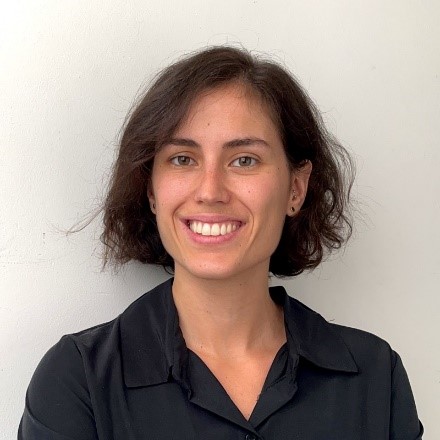
|
Soundscape auralization defines a selected strategy to restitute an acoustic and sonic environment related to a real or virtual place. Various approaches are of interest, from acoustically accurate room acoustic renderings to more holistic approaches including meaningful sound prototypes, depending on the auralization purpose: realistic demonstrations, subjective evaluation, virtual reality, etc.
This structured sessions will address various aspects of this topic such as -Spatialized sound field rendering, in-motion user-centric auralization, optimized signal processing for real-time rendering, methods to better estimate and render room impulse responses -Room acoustics criteria reproduction (including space), insulation and absorption material auralization, impact noise auralization -Improvements of relevant reproduction systems (headphone based or multi-loudspeaker based reproduction systems) -Psychoacoustic studies results, perceptual limitations and realism criteria for interior and exterior soundscape auralization -Experience-based immersive strategies including specific recording techniques, physical or non-physical modeling synthesis, intermodal environment restitutions
|
Gan Woon-Seng
Send an email
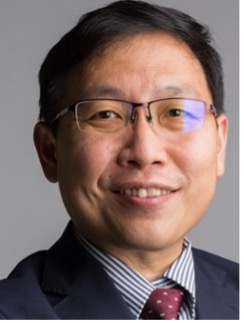
|
This session includes basic and applied research on the topic of sound and its role in urban spaces. We invite papers on the evaluation and characterization of the public and private realms, on laboratory studies of urban sound perception, on the opportunities for soundscape planning and design in urban contexts, as well as on the mobilization of soundscape research knowledge into practice.
|
Kang Jian
Send an email

|
Environmental noise, such as noise emitted by means of transportation, industrial and construction activities, has significant impacts on the environment and human health. In developing countries, the continuous growth of urbanization and industrialization generally results in more serious noise problem.
This session calls for theoretical, experimental and policy research works in the field of environmental noise in developing countries. The suggested topics include but not are limited to the following:
- Environmental noise legislation and Policy
- Environmental noise and human health
- Noise mapping
- Assessment of environmental noise emissions
- Urban Sound Planning
- Noise mitigation approaches
|
Xie Hui
Send an email
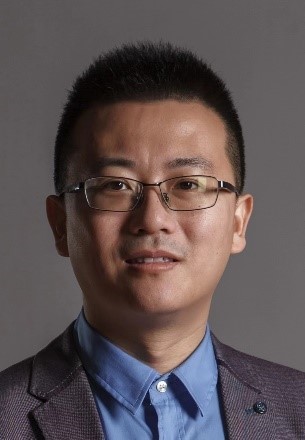
|
The understanding of the interaction between an acoustic wave and a complex medium is an important problem in various applications such as nondestructive testing (NDT) or biomedical ultrasound. This session will focus on experimental issues including the development of inversion procedures.
| |
Nonlinear acoustics and vibration has become increasingly important during the last forty years due to the exponential increase of computation power, increasingly higher sensitivity of electronic instrumentation and suitable signal processing. It is a broad field, which encompasses large amplitude sound waves and vibration. The nonlinearity of materials results in nonlinear effects, which arise from defects in the materials present at all scales. Applications include nonlinear nondestructive testing (NDT), harmonic medical ultrasound imaging, high intensity focused ultrasound for noninvasive surgery, cavitation, and control of high intensity jet noise and development of new materials such as nanocomposite and memory based materials. Also included are the phenomenon of chaos, which has become popular during the last twenty years with the establishment of institutes of nonlinear science and complex systems in universities and research centres. In addition, journals are now dedicated to this subject. Chaos theory is used today even in the prediction of price movement on stock markets. Also an important topic for this session will be the application of gauge invariance approach to nonlinear acoustics and vibration which will include treatment of inverse scattering and multiple scattering problems and interactions. Structured sessions on nonlinear acoustics and vibration are present since ICSV5 in Adelaide, Australia in 1997. We have witnessed the growth in this field demonstrated by the increasing number of papers to the current number of twenty to thirty papers presented at each ICSV congress.
|
Serge Dos Santos
Send an email
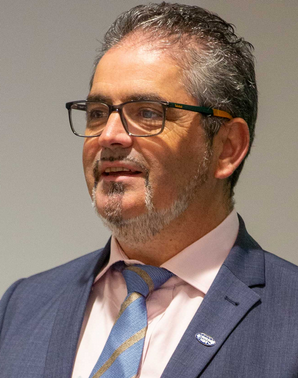
W. S. Gan
Send an email

|
Acoustic cloaking is the first application of sound propagation in curvilinear spacetime. Curvilinear spacetime approach is especially suitable for intense sound and nonlinear acoustics due to the curvilinear path of intense sound field. By developing nonlinear acoustics on the curvilinear spacetime, one will increase the sensitivities, accuracies and completeness of the subject.
Also curvilinear spacetime will enable the covariance of all equations in physics. This is also a revolutionization/reformulation of nonlinear fluid mechanics and nonlinear fluid dynamics, especially for application to naval architecture and to study of jet noise, rocket noise and space shuttle noise. This structured session will introduce Einstein's field equations to acoustics. The scope of this session will include:
(1) nonlinear acoustics on curvilinear spacetime to include gravitational field
(2) derivation of acoustic field equations on curvilinear spacetime, for applications to both fluids and elastic solids.
(3) application of gauge invariance to multiple scattering and interactions on curvilinear spacetime
(3) hypersonics and astro-acoustics
(4) sonic fusion
(5) the extension of acoustic radiation force (ARF), an intense sound to curvilinear spacetime which will bring in the gravitational field. This will include topics of drug delivery and force of levitation
|
W. S. Gan
Send an email

Umberto Lemma
Send an email
|
Papers on experimental or theoretical techniques for modelling sound generation, sound propagation and sound radiation in flow ducts will be presented in this session. Of special interest are experimental and theoretical techniques for: characterizing in-duct sound sources, propagation of sound in duct systems with flow and sound radiation from duct openings. Modelling of acoustic limers and mufflers as well as other noise reduction techniques for ducted systems and particularly relevant for this session.
| |
The purpose of this structured session is to report on the latest developments of research works in the field of acoustic emission (AE). It is a well-known and promising field of condition monitoring, testing and diagnosis as nondestructive natures in different fields of industrial and biomedical applications. Papers presented in this session can focus on numerical or experimental investigations related to any research of AE applications in structural testing, monitoring, evaluating, characterizing, diagnostics, etc. carried out in laboratories or in practical installations in engineering or biomedical fields. Papers related to AE sensors, sensing systems, related signal processing or any other new technique to the concerned fields are also welcome to the session.
| |
Even though it is seen as a last resort solution, hearing protection is still widely used in the industry to protect workers from harmful noise. This session covers various aspects related to the use, selection, care and maintenance of hearing protection devices (HPD). It includes subjective and objective measurements of the performance of HPD (attenuation, occlusion effect, etc.), comfort related aspects, model development and modeling strategies, steady state and impulse noise, new and advanced technologies as well as case studies.
|
Rafal Mlynski
Send an email

Christian Giguere
Send an email
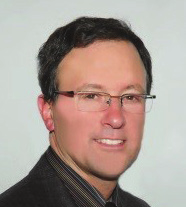
|
This session is aimed, but not limited to studies on assessment and control of human exposure to vibration, biodynamic responses to hand-arm and whole-body vibration, health effects and epidemiology of occupational exposure to vibration, motion sickness and vibration perception. It also covers various topics such as suspension seats, antivibration gloves, hand-held tools, vehicle dynamics and ergonomic intervention and regulations related to vibration exposure.
|
Piotr Kowalski
Send an email

|
Whatever their size, workshops often have noise problems. More to the point smaller entities seldom enjoy a private internal health and safety service, or environmental control for that matter, and solely rely on the labour ministry doctor – if available and willing to dabble in environmental matters. The following aspects are especially tackled in this session: i) Noise in the environment (overview of regulations, consequences on operations, monitoring the noise, noise reduction problems); ii) Noise at the workstations outdoors (assessing noise exposure, reducing noise at the source, planning the work to reduce the noise exposure, case of maintenance people); iii) Considerations with regards to the industrial building (overview of regulations, requirements for acoustic absorption, reducing the sound propagation, ensuring alarm signals can be safely heard, while making sure the neighbourhood is suitably protected); iv) Legal considerations: While one may emit recommendations and hope for the best, most of the time it is necessary to implement regulations in order to achieve a result. But is it sufficient to edit a regulation if nobody is in charge of applying it? Furthermore, even in the European Union where the rules are supposed to be identical in each member country, is the law applied in the same spirit everywhere? This session aims to compare experience gained in various countries and over a broad range of subjects, and wonder about the potential perspectives.
|
Dariusz Pleban
Send an email
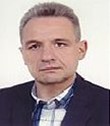
|
This session aims at collecting research and studies on theoretical and experimental subjects related to the reduction of noise and vibration generated by machinery and machine components. Papers are welcome concerning the machine vibroacoustic design as well as current and future noise and vibration control strategies. The studies on innovative numerical and experimental techniques for the analysis of sound sources and generation mechanisms are of special interest.
|
Eleonora Carletti
Send an email
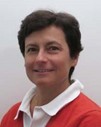
|
This theme covers all aspects related to rotordynamics and dynamics of rotating machinery, involving (but not limited in) systematic modeling and analysis, linear and nonlinear dynamic stimulation, active/semi-active noise and vibration control, fault diagnosis and fault tracing of rotor-bearing system and rotating machinery, as well as new experimental techniques and devices for such systems.
|
Evangelos Sapountzakis
Send an email
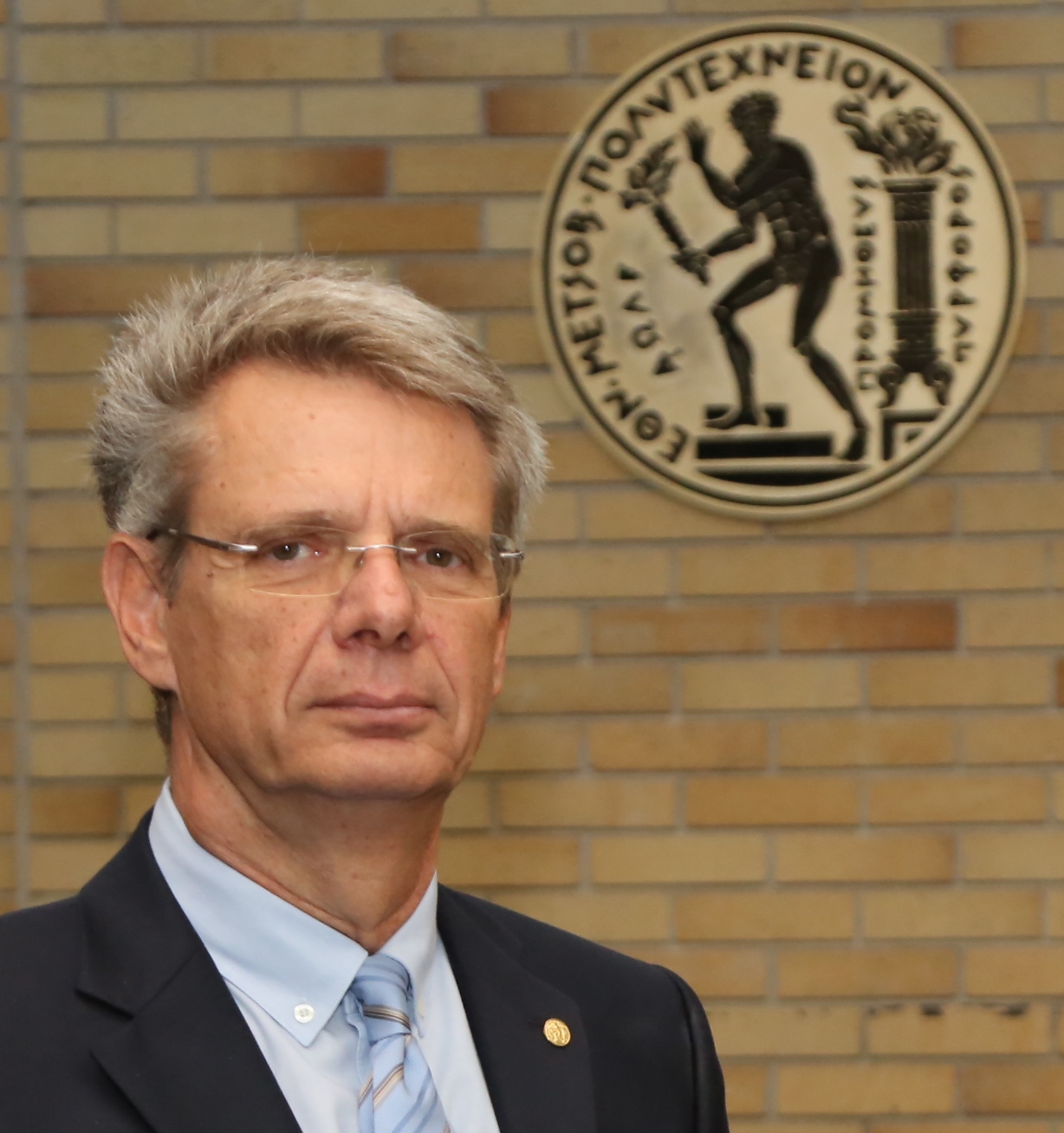
Konstantinos Kapasakalis
Send an email

|
This structured session aims to bring together research and expertise on various subjects related to vibration energy harvesting for the purpose of powering small-sized and low-powered electronics and sensors. Contributions in this session can cover new theoretical or experimental approaches concerning various types of vibration energy harvesters such as those based on piezoelectric, electromagnetic, and electrostatic transducers, operating based on different types of input vibrations such as those originating from operational conditions (machinery) or fluid flow (wind). Additionally, contributions can be made on electromechanical aspects (transducer part), the electronics and power management aspects (voltage rectification and regulation), and the material aspects; multidisciplinary approaches combining different aspects are particularly encouraged.
|
Evangelos Sapountzakis
Send an email

Konstantinos Kapasakalis
Send an email

|
Modal analysis is the process of determining the inherent dynamic characteristics of a system in forms of natural frequencies, damping factors, and mode shapes and using them to formulate a mathematical model for its dynamic behavior. The mathematics involved is wide-ranging, partly because modal analysis involves both time domain and frequency domain analysis. It deals with discretized dynamic systems and continuous structures. Theoretical and experimental aspects and case studies are particularly expected.
|
Evangelos Sapountzakis
Send an email

Konstantinos Kapasakalis
Send an email

|
The purpose of this Structured Session is to constitute a forum for the exchange of knowledge concerning the latest research developments in the field of Vibration Absorption. This Structured Session particularly focuses on the modeling and in-depth understanding of the following fundamental problems in civil, mechanical and aerospace engineering:
• Novel absorber concepts (inerters, negative stiffness elements);
• Meta-materials;
• Active Noise and Vibration absorption;
• Design, manufacturing, testing of novel materials for vibration control of civil structures and infrastructure
• Seismic isolation absorption concept for foundations of structures
• The controllable rocking motion of columns
• Retrofitting concept for existing structures
• Configurable pile arrays for ground‐induced vibration mitigation;
• Applications of vibration absorption in aerospace, seismic protection, low-frequency noise absorbers
|
Konstantinos Kapasakalis
Send an email

Evangelos Sapountzakis
Send an email

|
This structured session aims to bring together research and expertise on different subjects related to acoustic flexible materials, perforated panels or sheets, metal foams, and damping materials. Contributions in this session can cover new theoretical, manufacturing (3D printing), or experimental approaches concerning various types of materials that can be subjected to different types of excitation. Specific topics related to new and current materials may include: airborne sound absorption, airborne and impact sound insulation, damping, propagation of sound in porous media, effect of airflow, vibration and noise control systems, and design of sound absorbent ducts. This session welcomes new findings on materials for noise and vibration control.
|
Marco Caniato
Send an email
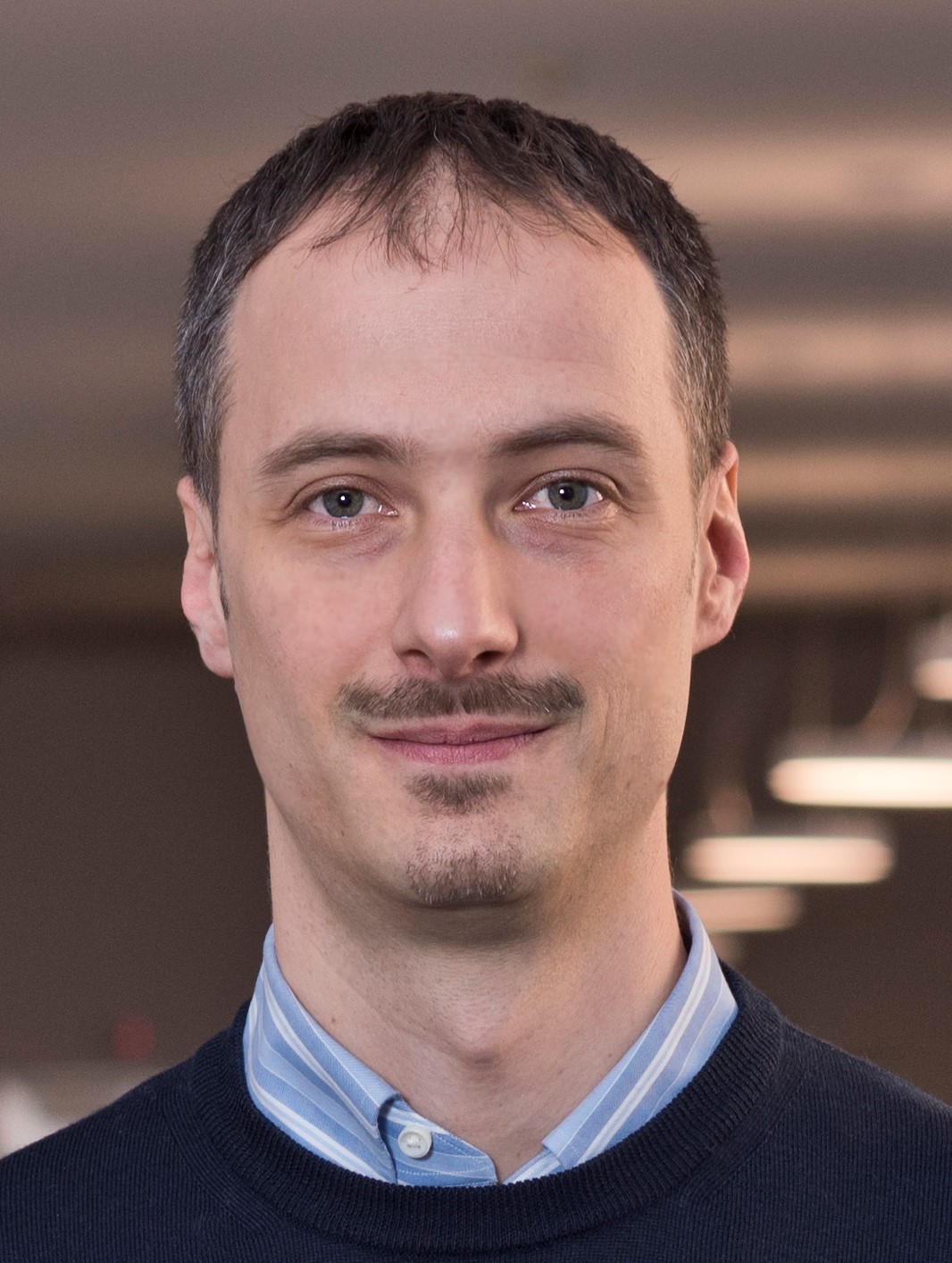
|
This structured session aims to bring together research and expertise on different subjects related to damping materials. Contributions in this session can cover new theoretical, manufacturing (3D printing), or experimental approaches concerning various types of materials that can be subjected to different types of excitation. This session welcomes new findings on materials for vibration control.
|
W. S. Gan
Send an email

|
Acoustics is a classic field of inquiry that has enjoyed a strong revival during the past two decades, propelled mainly by the advent of phononic crystals and acoustic metamaterials, two newly developed research areas that focused on man-made structures with acoustic properties not commonly found in nature. Whereas phononic crystals denote periodic structures exhibiting frequency bandgaps in which there can be no propagating acoustic/elastic waves, acoustic metamaterials acquire their exotic characteristics as collective manifestations of local resonators. Both phononic crystals and acoustic metamateials are composite structures comprising materials of different mass densities and hardness. In the case of acoustic metamaterials, however, the response of the composite to external excitations can differ from a rigid solid by having internal relative motions between the different material components. The past fifteen years have witnessed the novel capabilities that can arise from such locally resonant sonic materials, which are characterized not only by their subwavelength physical size, but also by their effective mass density and bulk modulus that can exhibit negative values. There are tremendous scope in the applications of acoustic metamaterials and phononic crystals, such as acoustic superlens, acoustic cloaking, aeroacoustic cloaks. The recent discovery of metamaterial as artificial phase transition manifested in quantum metamaterial producing artificial superconductivity and metamaterial as route to high temperature superconductivity. Permmitivity, permeability, effective bulk modulus and effective mass density are transport properties. Metamaterials with singularity behaviour of transport properties at point of local resonance similar to that of singularity at critical point of phase transition. Based on transport properties, one can go beyond acoustic and electromagnetic metamaterials to other forms of metamaterials. With metamaterials as artificial phase transition, one can control the degree of phase transition. The unusual phenomena exhibited by the phononic crystals and acoustic metamaterials, as well as their underlying physics, are the subjects of this structured session.
This special session will cover the following topics:
phononic crystals ; nonlinear phononic crystals ; band-gap metamaterial; negative refraction; double negative metamaterial; acoustic cloaking; aeroacoustic cloak; acoustic diodes; acoustic waveguides and resonators based on metamaterial; application of phononic device to communication; sound insulation panel using metamaterial; vibration reduction using metamaterial; acoustic metamaterial as artificial phase transition.
|
W. S. Gan
Send an email

Wonju Jeon
Send an email
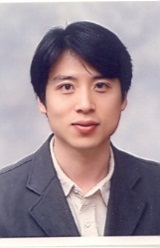
|
The purpose of this structured session is to report on the latest research and development works carried out in the field of sound absorption measurements and analysis conducted in reverberation rooms. Papers presented in this session can focus on experiments carried out in research laboratories. The papers can, for example, deal with the uncertainty analysis of sound absorption measurements in reverberation rooms and/or the uncertainty compared with those made in impedance tube for the same material(s). Modelling of sound field and measurements of the absorption coefficient even at low frequencies (few hundred Hertz and below) are other examples. Papers may also discuss new standards and/or drafts regarding reverberation room measurement techniques and original contributions about quantities that may be extracted from measured data.
|
Marco Caniato
Send an email

|
Researchers have been trying to understand cochlear function for hundreds of years. The most serious work began with Hermann von Helmholtz (1854), who compared the cochlea to a harp (an under-water array of resonators). In 1924 Wegel and Lane did break-through modeling research in terms of a cochlear traveling wave.In 1961 von Bekesy was awarded the Nobel prize for his work on verifying the existence of the basilar membrane (BM) traveling wave.In 1970 Rhode was the first to resolve a raging controversy by showing that the traveling wave was nonlinear.But a significant break through was the 1973 discovery by David Kemp of nonlinear cochlear distortion product otoacoustic emissions (DPOAE). Years of exploration of DPOAEs resulted a significantly improved understanding the inner workings of the cochlea.The outer hair cells are the source of the nonlinear compressive motion of the basilar membrane, or cochlear-amplifier (CA), and the mapping of the BM traveling wave. The analysis by DPOAEs have proven to be the key to our present understanding of cochlear function. In the last decade Optical Cochlear Tomography (OCT) has begun to explore the inner workings of the Organ of Corti. This session covers current research regarding our understanding of how the cochlear works. At this aim it gathers the most prominent scientists in this field. Basic research is devoted to the measurements and modeling of the cochlear function. Some issues still under debate are deeply discussed such as the relation between the neural tuning curves and the suppression curves on the BM. The most promising applications are also presented ranging from the association between DPOAE and hearing threshold, the relation between the DPOAE phase and the intracranial pressure, an early diagnostic tool based on OAEs for the age related hearing loss.
|
Renata Sisto
Send an email

Jont Allen
Send an email
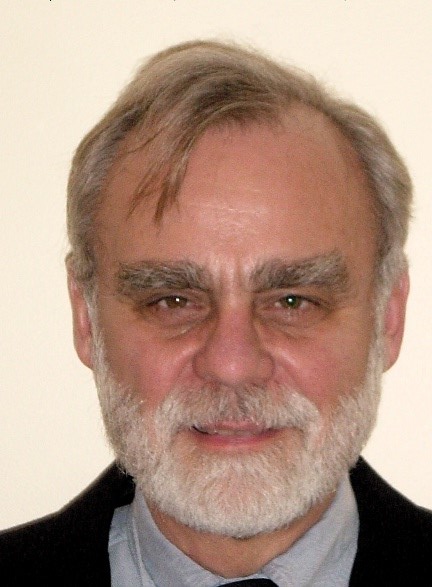
|
The session of Biotremology deals with any aspect of animal vibrational communication, either applied to practical matters or as mere biology studies. The common thread is the role of substrate-borne mechanical waves as signals of biological interactions. The characterization of these vibrations in the substrate, their role in modifying animal behavior and the use of artificial vibrations to manipulate such a behavior are examples of treated topics in this session.
|
Valerio Mazzoni
Send an email
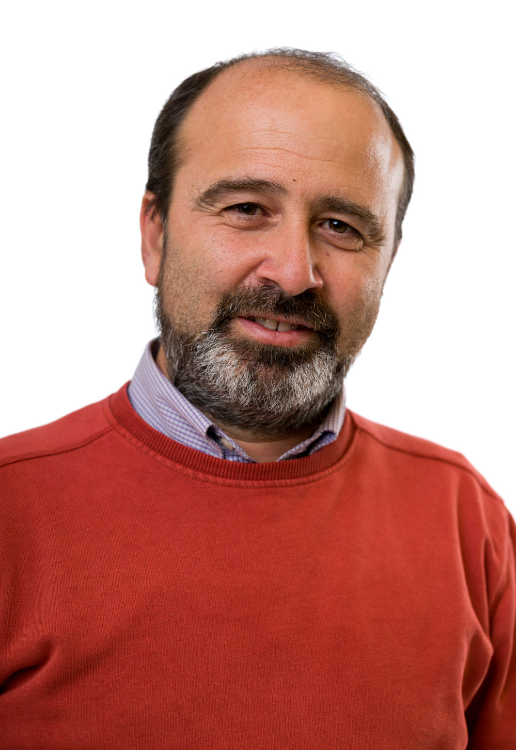
|
Compressive sensing proposes that sparse signals sampled at a rate lower than the Nyquist frequency can be successfully reconstructed. This structured session covers current research and methods that take advantage of sparsity to improve signal reconstruction by using compressive sensing and sparse regularization. This includes applications to acoustical holography, beamforming, localization algorithms, and microphone array design.
| |
The purpose of this structured session is to report on the latest developments of research works in the field of Machinery health monitoring (MHM). It is the related field of structural health monitoring system (SHM), NDT as well, concerning to the damage evaluation or monitoring performance analysis of industrial equipment, machinery, or any related structures. Papers focusing on numerical or experimental investigations related to machinery or structural damage evaluation or characterization or similar themes are most welcome to this session.
|
Robert Gao
Send an email
|
When buildings are subjected to earthquakes, it is imperative to dissipate some of the input energy through pre-determined and well-designed mechanisms. The aim of this special session is to report on recent advances and successful applications of seismic design methodologies and devices for building structures. The session welcomes contributions that cover but are not limited to, theoretical developments, computational issues, experimental techniques and tools for seismic design and retrofitting real-world applications, and integration of smart vibration control devices. Structural resilience is also an important indicator in civil engineering to express the capability of structure and infrastructure systems exposed to extreme events, such as earthquakes, to withstand the load effects and to recover efficiently the original configuration.
| |
Bearings and power transmissions are critical components in most industrial machines from airplanes to automotive, to wind turbines, and to machine tools. The sound and vibration are not only important performance parameters for those machines, but also can be used as indicators for machine condition monitoring. This session aims to provide a platform for researchers and engineers in the field from both academia and industries to exchange ideas, discuss solutions to the challenges faced in the field, and foster collaborations between academia and industries.
|
Victor Li
Send an email
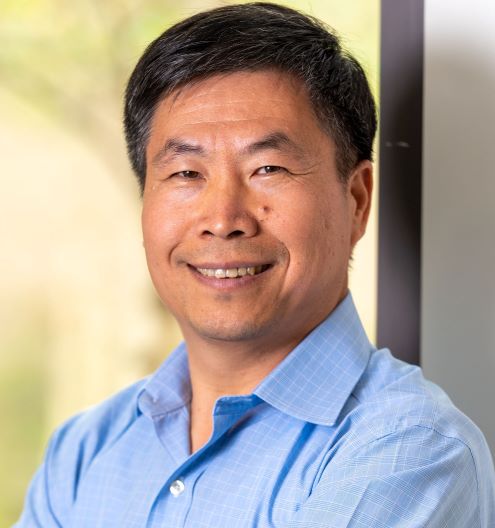
|
This session covers recent projects and research related to room acoustics. The topics include design, modelling, virtual reality simulation and measurement of acoustically sensitive spaces.
|
Umberto Berardi
Send an email
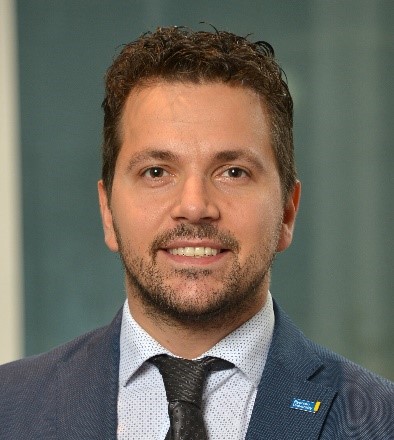
|
This session covers recent research and case studies on classroom acoustics. Presentations will document the status of classroom acoustic conditions around the world, present how acoustic conditions have been found to impact the health and performance of teachers and students, and discuss what can be done to ensure appropriate classroom acoustic design.
|
Astolfi Arianna
Send an email

|
This session is about the measurement and prediction of the sound insulation of walls, partitions, floor/ceilings, external facades and roofs of buildings and transport vehicles. Both the direct and flanking transmission of airborne and impact sound are included. Papers including the comparison of theory with experiment are particularly welcome.
|
Andrea Santoni
Send an email
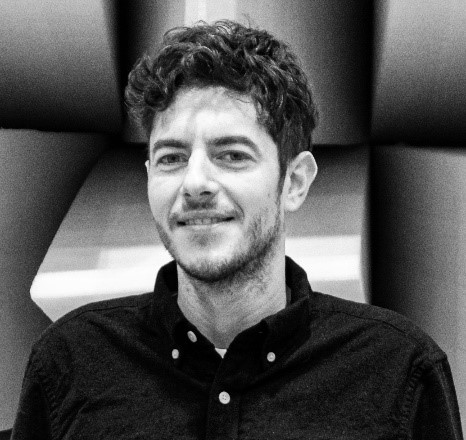
|
Structure-borne and impact noise is invariably more complex than airborne noise in terms of measurement, prediction and determination of transmission paths. Structure-borne noise in buildings is traditionally concerned with everyday impacts from human activities such as footfall; furniture movement; object or weight drops; or high-intensity activities in fitness centers or the transmission of ground-borne vibration into the building structure. There is debate over the accuracy and practicality of structure-borne noise prediction methods, particularly when flanking structures and resilient materials are incorporated. Equally the usefulness of established single-figure rating metrics and their associated test methodology is under study with regards to human perception considering the wide range of impact sources and building partition types through which this structure-borne noise transmits. Reducing impact noise in residential buildings requires the adoption or development of materials and solutions for the control of direct and flanking structure-borne sound. Papers are sought for this technical session that address these issues related to structure-borne and impact noise, their transmission paths and prediction methods in buildings.
|
Naval Agarwal
Send an email

|
This session is about the novel and consolidated researches on the acoustics of timber buildings, namely sound insulation of walls and floors, impact noise reduction, comfort in dwellings as well as schools and hospitals and noise from equipment. Papers including experiments, numerical simulation and analytical models are very welcome as well as regulations and standard proposals and/or discussion or analysis in this field.
|
Marco Caniato
Send an email

Antonino Di Bella
Send an email
|
There is ongoing interest in ship underwater radiated noise in the context of the design, manufacture, operation and maintenance of ships. This session provides an opportunity for presentation of research and analysis of modelling and measurement techniques as they apply to ships in all stages of design, construction and operation. The session places emphasis on vibration of onboard machinery, such as gearboxes and engines, and modelling of the subsequent vibration in the structure and sound radiation into the water.
|
Adrian Brown
Send an email

|
Propulsion systems deeply affect the comfort level inside the ship and undoubtedly are a major source of underwater radiated noise. This is proven by the extensive research activity ongoing on this particular topic.
This session invites papers on modelling, measurement and design issues related to vibration and noise generated by ship propulsors in operating conditions; in this framework, rotating blade systems are of particular interest.
To this aim, investigations on propeller shaft/blades vibrations, studies on vibration induced-noise and analysis on underwater sound radiation from non-cavitating/cavitating blades are encouraged.
|
Claudio Testa
Send an email

|
Noise and vibrations generated by ships affect a wide range of receivers: crew and passengers inside the vessel, inhabitants of the coastal areas and marine fauna outside it. Recent studies suggest that a large percentage of people living in urban areas close to harbors and a number of marine species, at different evolutionary levels (in particular mammals and cephalopods), suffer from ship N&V emissions in the air and in water. The present degree of knowledge of the phenomena involved in the noise emissions inside and outside ships is quite different, as a result also of the time elapsed since the negative effects were realized and therefore studied. The development of the normative framework in the various areas reflect these differences, but there are expectations for improvements on all fronts and need to be supported by the scientific community, that will definitely find in this structured session a suitable occasion for presenting the latest research results in this particular field of acoustics.
|
Davide Borelli
Send an email
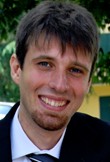
|
Noise from the activities of the port affects the daily life of thousands of people living in the Mediterranean area and in particular in the area covered by the EU funding program INTERREG Maritime Italy-France.
Till now, having no common approach, port noise has been tackled with different approaches obtaining poor results in terms of public health and efficient planning. Projects funded as REPORT, MON ACUMEN, and RUMBLE tackles the noise monitoring and planning of commercial ports in the cooperation area, developing
- a common methodology for noise monitoring and acoustic description,
- a comprehensive analysis of all acquired data
- best practices for efficient action planning according to Directive 2002/49/EC.
The session will host papers describing the results of these projects and others on harbor noise and its mitigation.
|
Gaetano Licitra
Send an email

|
The low frequency underwater acoustic landscape is rich with many different sounds including the general ambient background noise. In addition there is sound from natural events, such a underwater volcanic eruptions and storm events. Many marine mammals also vocalise in the frequency range of interest here, ie below 200 Hz. Due to the low absorption at very low frequencies sounds can often be heard and recorded from hundred of kilometres from their source. There are often complex propagation mechanisms as low frequency sound also travels through the sediment. In the polar regions a number of researchers have been investigating changes in the underwater acoustics due to climate change, including transient events from ice break-away. There are also a number of man-made noises such as pile driving, surveying and, increasingly, sound coupling into the ocean and seabed from offshore wind farms. This session will welcome papers on any of the above topics, including processing and classification of LF underwater acoustics. It is worth noting that there is a separate session on Ship Underwater Radiated Noise and so you may wish to submit material there if your research is on that topic.
|
Gary Heald
Send an email

|
The tones produced by musical instruments are very beautiful and very diverse. There are various types of instruments such as strings, winds, and percussion. All of them start from the player's input (string plucking/bowing, blowing, impact, etc.) and output their own unique tones through complex phenomena including the coupled vibration and the non-linearity, etc. Various attempts have been made to elucidate the sound mechanism of these instruments through experiments and numerical calculations. In this session, we will welcome research results on all musical instruments evaluating vibration and acoustic phenomena from various aspects.
|
Kojiro Nishimiya
Send an email
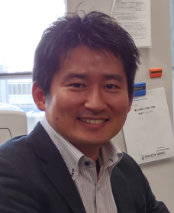
|
Musical instrument is a device to make musical sound, such as percussion, wind, stringed, electronic and various kinds of instruments. Singing voice may be one of most sophisticated musical instrument devices. Physical modeling aims to model and synthesize with mathematical approach to physically interpret musical sound or vocal voice. Papers related to measurement, analysis, synthesis and modeling of musical sound, singing voice or any other technique to the field are welcome to the session.
|
Bor-Tsuen Wang
Send an email

|
Since ancient times, many masterpieces of musical instruments which have excellent tones have been produced by artisans' experience and intuition. In recent years, on the other hand, scientific approaches have been used to propose shapes for musical instruments that produce rich tones. In addition to shape, there has also been a great deal of research seeking new materials for musical instruments, including materials other than wood and chemical treatments on wood. In this session, we will welcome research results from various fields such as design and production methods in the process of creating musical instruments.
|
Kojiro Nishimiya
Send an email

|
Psychoacoustics, known as the psychology of sound, involves the scientific study of sound perception. Perception of sound or music is a process in daily life situation and environment. A simple sound can be a function of frequency, amplitude and phase, while music has its distinct element of pitch, intensity, timber and rhythm. Papers related to, but not limited, music psychology, perception of sound, audiology, sound localization, signal separation, auditory scene analysis and sound masking are welcome to the session.
|
Bor-Tsuen Wang
Send an email

|
The description and understanding of the underlying phenomena associated with noise and vibration from railway transportation encompass extraordinarily complex mechanisms that are still an open field of research. These include wheel/track rolling noise, impact noise at discontinuities such as joints and crossings, curve squeal noise, aerodynamic noise from high-speed trains, vehicle interior noise, ground vibrations, etc. This session covers the latest developments in railway noise and vibration, including experimental work, numerical simulation and analytical models, with the aim of reducing the environmental impact of railway systems.
|
Francisco D. Denia
Send an email
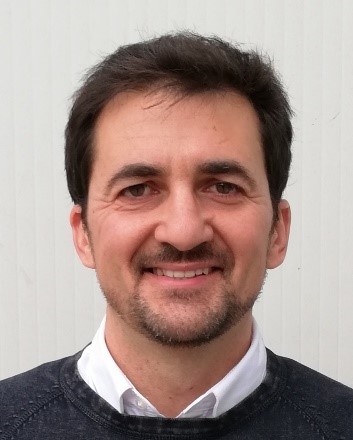
|
This session includes basic and applied research on the topic of noise and vibration from road vehicles. We invite papers on the mechanism, propagation and control of noise and vibration from road transport and vehicles, including road noise, noise and vibration from traditional vehicles, electric and hybrid vehicles.
|
Sifa Zheng
Send an email

|
Sound effect is an important part of human machine interaction, it is more and more widely studied and applied in vehicles, especially for electric and autonomous vehicles. The session focuses on basic and applied research of sound effect analysis and control method inside road vehicles. It includes the influence mechanism of sound on vehicle driver and passengers, the theory, simulation and experiment analysis method for sound effect, and design and control method of sound effect.
|
Sifa Zheng
Send an email

|















































